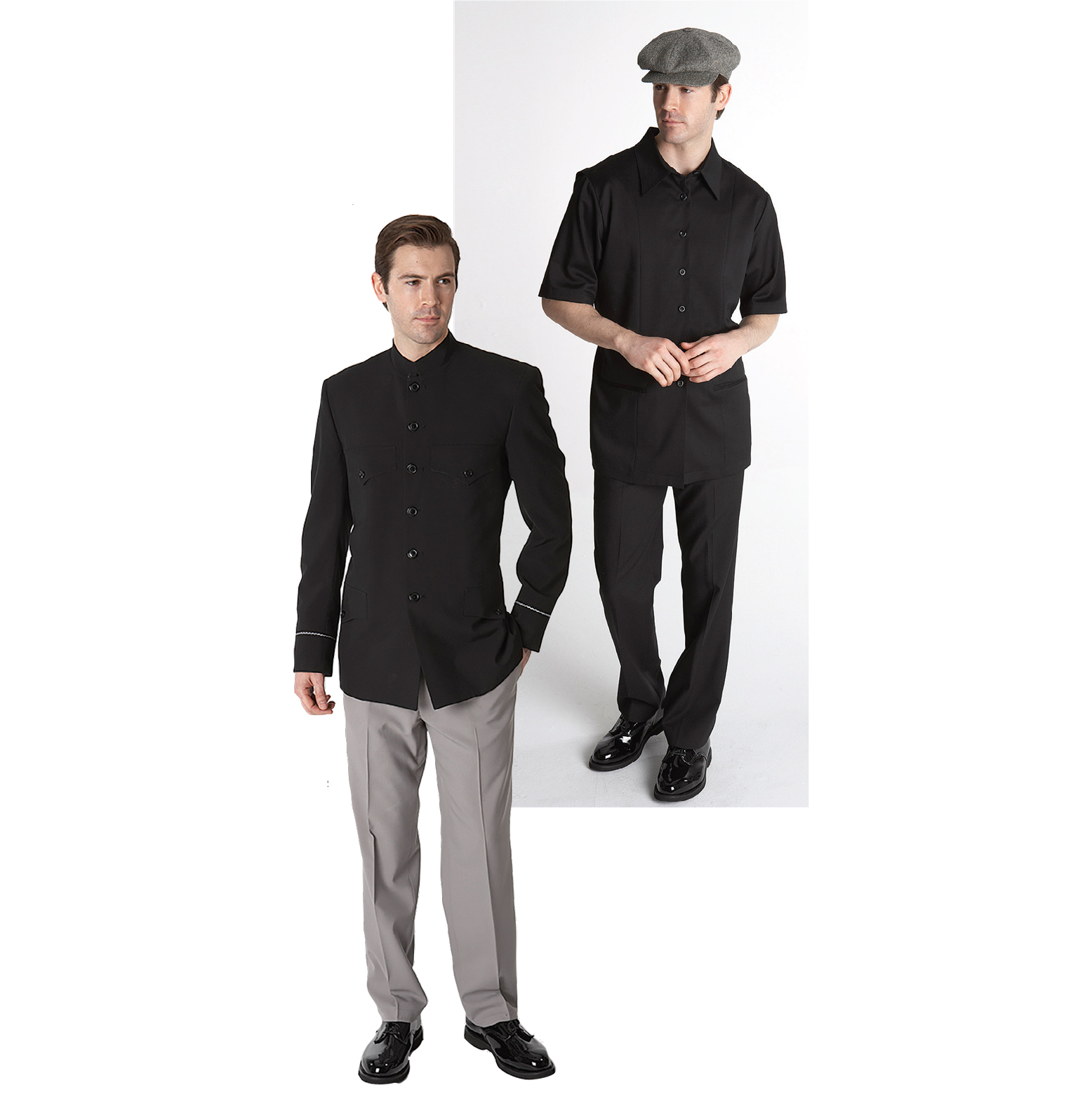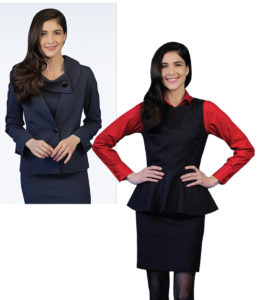NEW YORK—With the proliferation of hotel brands, now more than ever, standing out from the crowd is essential to creating a unique and memorable brand. Amenities, F&B, guest services and design are among some of the ways hotels can differentiate, but an often overlooked branding tool may be closer than one thinks—think scarves, coats and buttons.
“If hotels don’t take uniforms into account, it’s a missed opportunity,” said Jennifer Busch, CEO/owner, I. Buss & Allan Uniform. “The first thing that people see when they walk into a hotel is usually the bellman or the concierge, and if they’re in a nondescript suit, it’s not going to register.”
A memorable uniform could be a component of a memorable stay, especially when it comes to visible front-of-house employees.
“If a hotel has a certain look, then the uniforms should have a certain look. You want it to be recognizable for the brand. It’s an extension,” Busch said.
A fourth-generation company, I. Buss & Allan Uniform adds these touches to otherwise understated uniforms, adding a hint of personality into employees’ attire. Everything the company offers is customizable, and Busch advises that hotels steer clear of straight-from-the-catalog pieces.
“Hotels should meet with a designer, not a uniform salesperson to just pick out of a catalog—people [designers]who understand design and can look at the entire property or brand and understand if it’s a high-end, luxury brand, or if it’s a hip hotel,” Busch said. “You want the uniforms and the staff to reflect the brand.”
Mirroring the hotel’s brand isn’t just slapping the logo on a suit or dress, either. In fact, according to Busch, hotels aren’t using logos very much at all. Although this makes conveying a brand trickier, it allows designers to be more creative.
Busch looks to other features to create this sense of recognition. Busch likes to go to a property and discover details—maybe accents like color or texture—to incorporate into uniforms.
“You pick those things up and put a detail of that into the uniforms,” she said. “If it’s a one-off property, then maybe you do something like that, but if it’s not, then you need to think about who you’re catering to. If a certain type of businessperson comes in, they’re not going to respond to paisley, funky suspenders.”
For the more traditional hotel properties, a suit for men or dress for women usually works well, with a custom scarf or tie for a hint of branding. But, there’s one aspect that truly matters whatever the garment a hotel chooses: fit.
“It doesn’t have to be simple, but it definitely has to be tailored; you have to give options within the same color palette,” Busch said. “Out-of-the-catalog doesn’t work for every body type. You could have a doorman who has been at the property for 20 years, so he’s probably changed sizes. You want to make sure you’re keeping up with the fit of his uniform.”
While Busch recommends customization for these front-of-house employees, back-of-house employees tend to wear stock items, as many properties aren’t spending as much, especially if it’s not a big enough quantity. However, there are always exceptions.
“If it’s a brand that has three to five to 20 or more hotels, then they could do custom even for back-of-house—even do something that’s signature, like a housekeeping dress,” she said.
LEFT: Properly tailored uniforms provide comfort and class.
RIGHT: Pops of color add dimension to otherwise simple uniforms.
Other ways to individualize even the most mundane of uniforms include more winks at branding like leather accents, more color blocking and pops of color.
“Less uniform-y and more upscale,” Busch said when describing current trends. “Hotels have evolved in the sense that they’ve become more stylish, especially in the trendier, boutique hotels; they’re following fashion, or at least they should be, and a lot of them have taken the cue to do that. Plaids, checks, leather tie—they will even do belts and shoes.”
She also pointed at style no-nos for hotels, like suspenders, which are tough to fit, and overlooking design details in general.
“People don’t take the time to think about the details of what can go into it. To have a distinct look for your property, it could be something as simple as a button,” Busch said.
Rather than ill-fitted statement pieces, Busch said that signature peacoats and plaid for doormen offer trendier, cool alternatives.
“I’ve had people call me who remember cool coats or a cool dress for front-of house,” she said.
Regionally, Busch sees a lot of black in New York with just pops or accents of color, but across the country, it’s a different story.
“Some of it has to do with practicality—in Florida, it’s too hot to wear black,” she said.
Incorporating these details is important in hotel branding, especially because fewer properties are including logos or other direct links to brands in the garments.
“That’s why it’s important to have a signature uniform—it becomes synonymous with the brand,” Busch said. HB
To see content in magazine format, click here.




